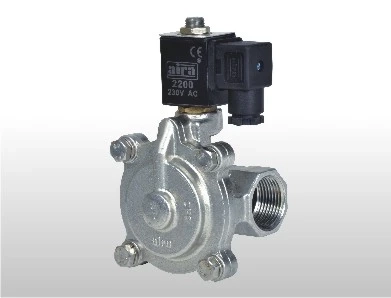The anatomy of a diaphragm valve reveals a simple yet effective design. It consists of a valve body, a flexible diaphragm, and an actuator. The diaphragm, typically made of rubber or elastomeric material, separates the flow passage from the valve body. When the actuator applies force, the diaphragm flexes against the valve seat, either permitting or obstructing the flow of fluids. This straightforward mechanism minimizes the risk of leaks and offers reliable operation. Diaphragm valves find applications in various industries due to their dependable operation, making them a critical component in fluid control systems.
Valve Body: the Foundation of Functionality:
The valve body serves as the core component of a diaphragm valve, providing the foundation for its functionality. It typically consists of two main sections: the inlet and outlet ports, connected by a chamber where the diaphragm is located. The valve body is constructed from materials that are compatible with the fluids to be controlled. Common materials include stainless steel, plastic, or exotic alloys for applications involving corrosive substances.
The shape and configuration of the valve body play a crucial role in determining the valve's flow characteristics. Different designs may include straight-line, Y-pattern, or weir-type bodies, each suited to specific applications and flow requirements. The valve body also houses the valve seat, a critical component that the flexible diaphragm contacts to control the flow of fluid. The design of the valve seat impacts the valve's sealing properties and performance.
The Diaphragm: Flexible Barrier for Precise Control:
The diaphragm is the heart of a diaphragm valve, functioning as a flexible barrier that controls the flow of fluids. It is typically made of rubber or elastomeric materials, offering the necessary flexibility and resilience to effectively seal and regulate flow. The choice of diaphragm material depends on the nature of the fluids being managed, ensuring compatibility and preventing corrosion.
The diaphragm's ability to deform and flex when acted upon by the valve's actuator is central to its role in fluid control. When pressure is applied to the diaphragm, it moves towards the valve seat, blocking the flow. Releasing the pressure allows the diaphragm to retract, permitting fluid passage. The precise control offered by the diaphragm makes diaphragm valves ideal for applications requiring fine adjustments and excellent shut-off capabilities.
Actuator Action: Regulating Flow with Precision:
The actuator in a diaphragm valve is responsible for controlling the movement of the diaphragm, enabling precise regulation of fluid flow. Actuators come in various types, including manual handwheels, pneumatic actuators, electric actuators, and hydraulic actuators, each offering different levels of control and automation.
Manual handwheels are simple and cost-effective, allowing operators to adjust the valve position manually. Pneumatic and electric actuators provide greater control and automation, allowing for remote operation and precise adjustments. The choice of actuator depends on the specific requirements of the application, considering factors like the desired degree of control and the need for real-time operation.
Seating Arrangement: Ensuring Leak-Free Performance:
The seating arrangement in a diaphragm valve is a crucial element in ensuring leak-free performance. The valve seat is in direct contact with the diaphragm and provides the sealing interface. It is designed to achieve a tight, secure closure, preventing any leakage when the valve is closed.
To enhance sealing performance, some diaphragm valves incorporate weir-type valve seats, which create a unique, controlled flow path, offering optimal shut-off capabilities. The quality and design of the valve seat, combined with the flexibility of the diaphragm, are essential for maintaining the integrity of the valve's sealing, especially in applications where leakage is unacceptable.
Operational Dynamics: How Diaphragm Valves Work:
The operational dynamics of diaphragm valves are rooted in the interaction of their key components. When the actuator is engaged, it exerts force on the diaphragm, causing it to flex and press against the valve seat. This action effectively closes the valve, blocking fluid flow. Releasing the actuator's pressure allows the diaphragm to retract, opening the valve and permitting fluid passage.
Diaphragm valves are known for their excellent sealing properties, which prevent leaks and cross-contamination. This reliability makes them valuable in industries where fluid purity and safety are paramount, such as pharmaceuticals, biotechnology, and food processing.
In summary, diaphragm valves function through a combination of key components: the valve body, the flexible diaphragm, and the actuator. The valve body provides the structure and the fluid flow path, while the diaphragm serves as the flexible barrier for precise control. The actuator regulates the diaphragm's movement, allowing precise adjustments. The seating arrangement ensures a tight seal, and the overall operational dynamics make diaphragm valves a trusted choice for fluid control in various industries. Aira Euromation's diaphragm valves stand as a testament to precision engineering and reliability in fluid control. Their innovative design and high-quality construction ensure that these valves excel in various industries, offering exceptional sealing and control capabilities. our commitment to excellence is evident in their ability to meet and often exceed industry standards. Whether in pharmaceuticals, petrochemicals, or water treatment, these diaphragm valves consistently deliver dependable performance, making them a trusted choice for those seeking efficient and leak-free solutions in fluid control applications.


